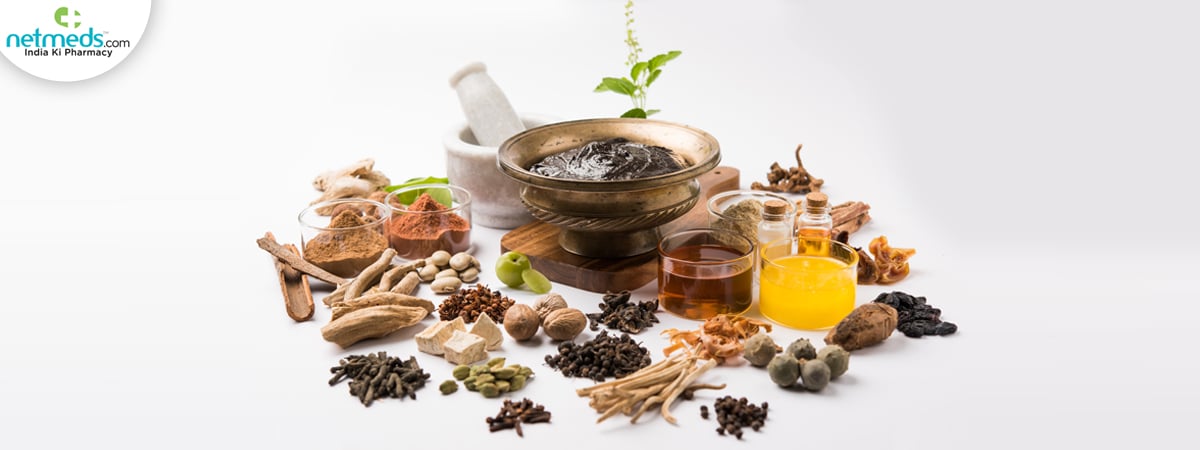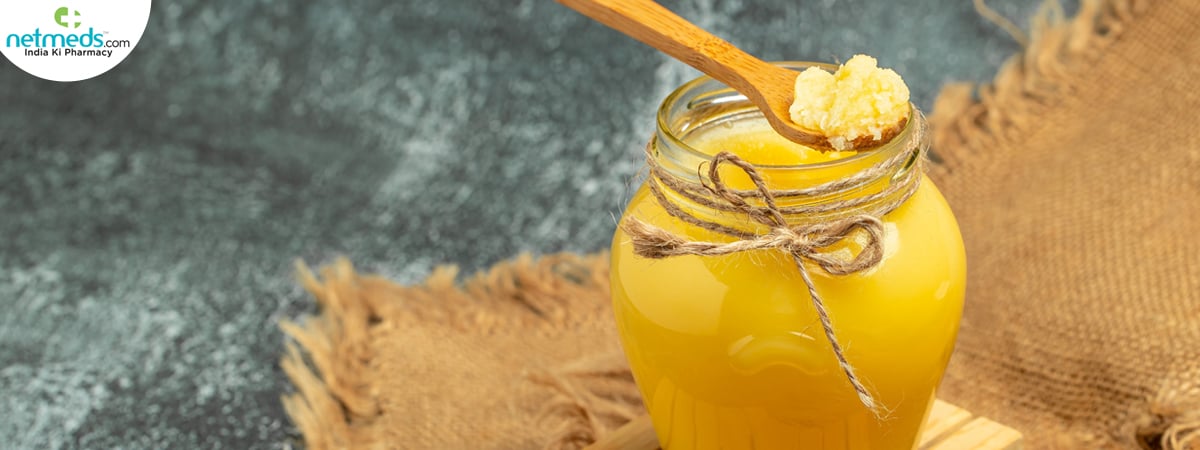Phala Ghrita is one of Ayurveda’s timeless herbal ghee formulations, celebrated for its remarkable nourishing, fertility-enhancing, and rejuvenative effects. As both a restorative uterine tonic and a general health enhancer, Phala Ghrita is widely recommended for men and women struggling with reproductive issues, including infertility, menstrual or seminal disorders, and prenatal weakness. Traditionally prepared by infusing ghee with powerful botanicals and milk, this unique remedy remains relevant for holistic reproductive and digestive wellness.
Be in the pink of health with our wide range of ayurvedic formulations!

What is Phala Ghrita?
Phala Ghrita (or Phalasarpi) is a medicated ghee described in classical Ayurvedic texts like Ashtanga Hridyam and Charaka Samhita. Designed foremost as a fertility and uterine tonic, Phala Ghrita harmonises the reproductive system, promotes conception, prevents miscarriages, and elevates vitality by delivering both water- and oil-soluble actives from an array of premium herbs using the medium of pure cow’s ghee.
Product Description of Phala Ghrita
Phala Ghrita is a golden-yellow, semi-solid ghee with a rich, mildly aromatic flavour and herbaceous undertones. Unlike plain clarified butter, it is distinctly infused with the juices, pastes, and extracts of various rejuvenative herbs and fruits. It is suitable for both internal consumption and as a medicated supplement during Panchakarma Snehana (oleation therapy). Commonly available in sealed jars, Phala Ghrita is valued for its nutrient density and long shelf life.
Ingredients
Classical Phala Ghrita includes the following ingredients:
Manjistha (Rubia cordifolia)
Kustha (Saussurea lappa)
Tagar (Valeriana wallichii)
Haritaki (Terminalia chebula)
Bibhitaka (Terminalia bellirica)
Amalaki (Emblica officinalis)
Vacha (Acorus calamus)
Haridra (Curcuma longa)
Daruharidra (Berberis aristata)
Madhuka (Glycyrrhiza glabra)
Meda (Polygonatum cirrhifolium)
Katurohini (Picrorhiza kurroa)
Kakoli (Roscoea procera)
Ashwagandha (Withania somnifera)
Shatavari (Asparagus racemosus)
Hing (Ferula foetida, Asafoetida)
Sharkara (Sugar or jaggery)
Cow’s ghee
Cow’s milk
Additional regional/traditional variants may include fig, pomegranate, almond, amla, and honey.
Method of Preparation
The traditional preparation of Phala Ghrita follows these steps for maximum therapeutic effect:
Collect and thoroughly wash all herbs.
Grind select herbs into a fine, moist paste (kalka).
Simultaneously, make a herbal decoction by boiling certain botanicals in water.
Mix the herbal paste and decoction with cow’s milk and pure ghee.
Simmer this mixture on a gentle flame, stirring continuously until all water has evaporated and only the medicated ghee remains.
Carefully filter the Ghrita and store it in airtight, moisture-free glass containers, away from sunlight.
This method ensures a complete transfer of both water- and fat-soluble herbal actives into the ghee medium.
Benefits Of Individual Ingredients
Manjistha (Rubia cordifolia): Supports healthy skin, detoxifies blood, and balances Pitta dosha.
Kustha (Saussurea lappa): Strengthens digestion, supports liver function, and relieves respiratory issues.
Tagar (Valeriana wallichii): Calms the nervous system, reduces stress, and improves sleep quality.
Haritaki (Terminalia chebula): Promotes digestion, detoxifies the body, and supports bowel regularity.
Bibhitaka (Terminalia bellirica): Aids digestion, rejuvenates tissues, and helps maintain respiratory health.
Amalaki (Emblica officinalis): Rich in Vitamin C, boosts immunity, and acts as a powerful antioxidant.
Vacha (Acorus calamus): Enhances cognitive function, supports mental clarity, and balances Vata dosha.
Haridra (Curcuma longa): Reduces inflammation, improves digestion, and detoxifies the body.
Daruharidra (Berberis aristata): Supports liver function, balances Pitta, and acts as an antimicrobial.
Madhuka (Glycyrrhiza glabra): Soothes the digestive tract, supports respiratory health, and boosts immunity.
Meda (Polygonatum cirrhifolium): Nourishes tissues, strengthens vitality, and supports reproductive health.
Katurohini (Picrorhiza kurroa): Protects liver health, aids digestion, and balances Pitta dosha.
Kakoli (Roscoea procera): Supports liver and digestive function and rejuvenates body tissues.
Ashwagandha (Withania somnifera): Enhances strength, immunity, and reduces stress.
Shatavari (Asparagus racemosus): Supports female reproductive health, balances hormones, and nourishes tissues.
Hing (Ferula foetida, Asafoetida): Improves digestion, reduces bloating, and relieves gas.
Sharkara (Sugar or jaggery): Provides energy, enhances taste, and acts as a natural preservative.
Cow’s ghee: Nourishes tissues, improves digestion, and enhances absorption of herbal compounds.
Cow’s milk: Provides nourishment, strengthens bones, and balances Vata dosha.
Additional variants (fig, pomegranate, almond, amla, honey): Provide antioxidants, promote digestion, and enhance the overall nutritive value of the formulation.
Medicinal Qualities of Phala Ghrita
Phala Ghrita possesses the following medicinal qualities:
Fertility enhancer (Vajikarana/Aphrodisiac)
Uterine tonic and ovarian support
Natural adaptogen and immunity booster
Mild laxative and digestive
Rasayana (Rejuvenative/anti-aging)
Ojas (vitality) booster
Bone, brain, and tissue nourisher
Endocrine stimulant
Relieves genitourinary and menstrual complaints
Medicinal Qualities of Phala Ghrita
Phala Ghrita is revered for its multi-faceted medicinal qualities:
Balya (Strengthening): Improves stamina, body strength, and vitality.
Rasayana (Rejuvenative): Nourishes tissues, supports longevity, and promotes wellness.
Vajikarana (Aphrodisiac): Supports reproductive health and fertility.
Medhya (Brain Tonic): Enhances memory, concentration, and mental clarity.
Agni-stimulating (Digestive Enhancer): Strengthens digestive fire, promotes nutrient assimilation, and prevents toxins.
Vatanulomana (Vata-regulating): Corrects Vata imbalance, reducing bloating, dryness, and gas.
Pittahara (Pitta-regulating): Balances internal heat, acidity, and inflammation.
Kaphahara (Kapha-regulating): Mildly balances Kapha, reducing congestion and heaviness.
Hrudya (Cardiac-Tonic): Supports heart health, circulation, and overall vitality.
Sheeta Virya (Cooling Potency): Reduces internal heat, irritation, and inflammation.
Ayurvedic Properties of Phala Ghrita
Rasa (Taste): Sweet, slightly astringent and bitter
Guna (Quality): Unctuous, heavy, and soft
Virya (Potency): Cooling (Sheeta) and mildly heating (depends on herb content)
Vipaka (Post-digestive effect): Sweet
Dosha Action: Balances Vata and Pitta (can mildly influence Kapha)
Prabhava (Specific action): Promotes fertility, stabilises pregnancy, supports fetal growth, aids in chronic genitourinary and digestive issues.

Amazing Health Benefits of Phala Ghrita
Supports Female Fertility
Phala Ghrita is traditionally acclaimed for its fertility-promoting (“prajasthapaka”) action. Clinical research shows it improves ovarian function, stimulates healthy follicular development, and strengthens the endometrium, thus enhancing conditions for ovulation and conception. In documented trials, nearly 22% of women with infertility conceived after three months of oral Phala Ghrita use, especially in cases without a specific structural cause. Its nourishing and hormone-balancing herbs help regulate cycles and prepare the entire reproductive tract for successful conception.
Also Read: Fertility Yoga: Time-Tested Yogasanas To Treat Infertility Issues
Prevents Miscarriage/Recurrent Pregnancy Loss
Phala Ghrita helps build a strong uterine lining, enhances tubal potency, and improves cervical mucus quality, factors vital for implantation and ongoing pregnancy. Its ability to regulate hormones, boost endometrial blood flow, and support fetal nourishment is well-documented in uttarabasti (intrauterine) and oral therapy protocols. By balancing Vata dosha (which, when disturbed, is associated with miscarriage), it stabilises and protects pregnancy, particularly in women with weak uterine tone or recurrent pregnancy loss.
Improves Male Reproductive Health
Although best known for supporting female fertility, Phala Ghrita is also useful for male reproductive disorders. The potent blend of rasayana herbs helps manage oligospermia (low sperm count), enhances sperm quality, improves motility, and can aid semen-related issues like premature ejaculation or erectile dysfunction. Acting as an aphrodisiac and nourishing shukra dhatu (reproductive tissue), it rejuvenates the male reproductive system and supports balanced hormones.
Balances Menstrual Cycles
Phala Ghrita supports regular, healthy menstrual cycles by harmonising the endocrine system and strengthening the uterine lining. It has been shown to ease secondary amenorrhea (absent periods), dysmenorrhea (painful periods), and excessive bleeding by correcting doshic imbalances, especially Vata and Pitta. Its gentle hormonal modulation and endometrial support soothe menstrual discomfort and improve overall gynaecological health.
Enhances Immunity
The adaptogenic and antioxidant botanicals in Phala Ghrita, such as amalaki, haridra, and liquorice, stimulate immune function, speed recovery after illness, and promote cellular repair. Regular use boosts the body’s resistance to infections and optimises tissue healing across multiple systems.
Also Read: Immunity Boosters: 6 Powerful Herb Infused Concoctions You Must Have For Enhanced Health
Boosts Cognitive Power
Herbs like Ashwagandha (stress adaptogen), Vacha (nootropic), and Shatavari (rejuvenator) impart the medhya (brain-strengthening) quality to Phala Ghrita, enhancing memory, learning ability, mental clarity, and focus. This effect can be especially helpful for students, the elderly, or anyone experiencing cognitive fatigue or mood swings.
Relieves Genitourinary Disorders
Phala Ghrita’s soothing, anti-inflammatory effects aid the management of vaginitis, leucorrhea, uterine inflammation, and irritative urinary tract symptoms. Its ingredients reduce local inflammation, improve mucosal health, and restore the integrity of pelvic tissues, providing multi-faceted support for women’s urogenital health.
Calms Mood Disturbances
With nervine anti-anxiety botanicals (such as valerian and ashwagandha), Phala Ghrita gently alleviates anxiety, mood swings, and irritability. This property is valuable during fertility treatments, peri-menopause, or times of hormonal transition. It promotes restful sleep, stabilises the mind, and provides emotional resilience.
Promotes Gastrointestinal Health
Phala Ghrita’s mild digestive herbs (like ginger and haritaki) help relieve chronic indigestion, support healthy gut flora, and enhance the absorption of nutrients. The nourishing ghee base soothes inflamed mucosa, regulates bowel movements, and may reduce symptoms of gastritis, constipation, or hyperacidity.
Also Checkout: Digestive Health: 5 Amazing Herbs For Uplifting Gut Health And Function-Infographic
Acts as a Rasayana
Phala Ghrita is recognised as a rasayana (rejuvenator), meaning it delays premature ageing, strengthens bones, muscles, and nerves, and restores Ojas (vital energy). Regular use supports cellular repair, tissue regeneration, and lasting overall vitality, making it a valuable ally for chronic weakness or recuperation after diseases.

Dosage of Phala Ghrita
Recommended doses for Phala Ghrita:
General Adult Dose: 1/4 to 1/2 teaspoon with warm milk or as directed by a qualified Ayurvedic practitioner, usually once or twice a day.
For Panchakarma Snehana: Dosing varies according to the doctor’s recommendation.
Dosing should always be personalised, especially in pregnancy or for those with chronic health conditions.
Side Effects of Phala Ghrita
Generally well tolerated when taken in prescribed doses for appropriate indications.
Large doses can cause indigestion, loose stools, or diarrhoea.
Due to ghee’s high fat content, people with diabetes, high cholesterol, or heart disease should exercise caution.
Allergic reactions are rare; discontinue use if any signs occur.
Precautions of Phala Ghrita
Always use under the supervision of an Ayurvedic physician.
Avoid overdose or use for extended periods without medical advice.
Not suited for those with severe liver dysfunction, fat malabsorption, or sensitivity to dairy.
Monitor in pregnancy and lactation, though often advised, supervision is essential.
Store in a cool, dry, and hygienic environment.
Conclusion
Phala Ghrita is a classical Ayurvedic elixir blending tradition, science, and practical nourishment. This versatile medicated ghee goes beyond enhancing reproductive health; it acts as a gentle rasayana to nurture the body, mind, and spirit. Used responsibly and in the right setting, it remains one of Ayurveda’s most potent holistic tonics for both preventive and therapeutic health. Persons seeking to harness its full potential should consult an expert for tailored advice, proper usage, and maximal benefits.
Frequently Asked Questions
What is Phala Ghrita used for in Ayurveda?
Phala Ghrita is primarily used as a rejuvenative tonic to support digestion, reproductive health, and overall vitality.
How does Phala Ghrita help reproductive health?
It acts as a Vajikarana (aphrodisiac) tonic, strengthening reproductive tissues and improving fertility.
Can Phala Ghrita improve digestion?
Yes, it enhances digestive fire (Agni) and helps in proper nutrient absorption.
Who can take Phala Ghrita?
Adults and individuals with weakness, debility, or reproductive concerns can benefit from it under Ayurvedic guidance.
How should Phala Ghrita be taken?
It is usually taken in 5–10 ml doses with warm milk or water, once or twice daily.
(This article is reviewed by Kalyani Krishna Chief Content Editor)
Author Profile
Soumita Basu:
Soumita Basu holds a Bachelor’s Degree in Pharmacy and is keenly interested in Ayurveda, home remedies, yoga, fitness, diagnostics, and beauty. With nearly 6 years of experience, she produces evidence-based health content, including articles, videos, and infographics, to provide valuable insights to her audience.
References:



 Previous
Previous